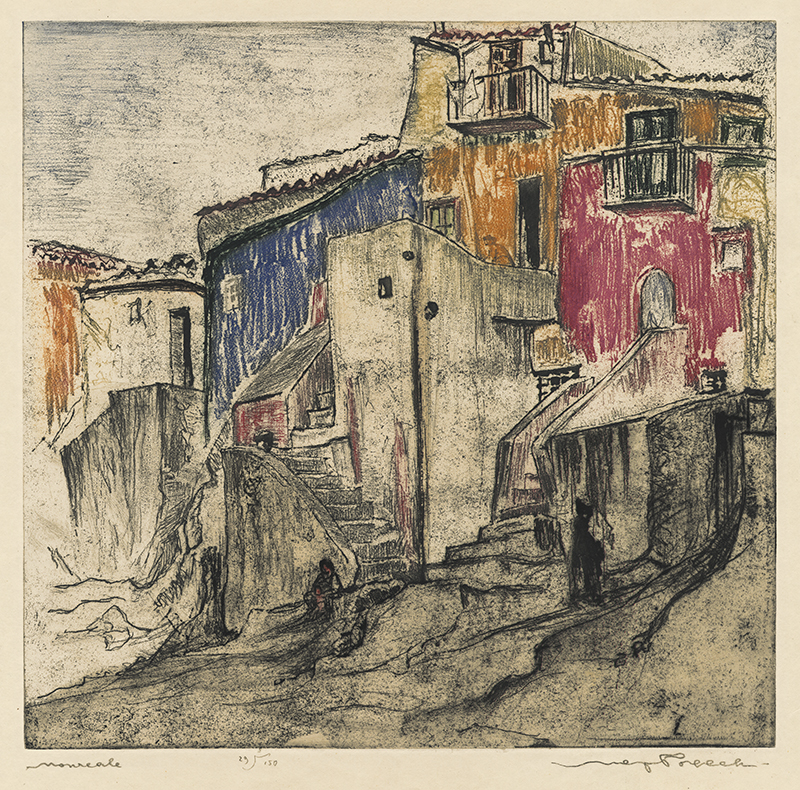Monreale, a.k.a. Mon Reale, Sicily, is a color softground and etching from about 1932 by Austrian born printmaker, Max Pollak (1886-1970). Monreale is pencil signed and titled in the lower margin and is editioned 29/150. It was printed by the artist on ivory simile vellum and the platemark measures 12-7/8 x 12-3/8 inches. Monreale is listed as no. 68 on the checklist of titles included in the 1949 retrospective of Pollak’s work at the University of California Berkeley.
Monreale is a hill town just outside of Palermo in Sicily in southern Italy, and is famous for mosaics in the Norman cathedral built between 1170 and 1189. Pollak was not interested in replicating the town in etching. This image is so successful because of the gestural strokes of color rendered in softground. It appears as if he was motivated by the pulse and vibrancy of this hill town where colorful buildings appear to be stacked atop others as they ascend the hillside.
Max Pollak, painter and printmaker, was born in Prague, Czechoslovakia in 1886. He was raised in Vienna and, in 1902, he entered the Vienna Academy of Art where he studied under William Unger and Ferdinand Schmutzer. In 1912, Pollak traveled to Italy, France, and Holland to study and paint. During the First World War, he was appointed painter of the Austrian Army.
He immigrated to the United States in 1927, living for a time on the east coast where he produced a series of color aquatints of New York, Cincinnati, and Detroit. His first exhibition was at the 57th Street Art Gallery in New York and he was commissioned by Theodore Dreiser in 1929 to illustrate his book, My City. In 1938, Pollak and his wife, Friedl, moved to San Francisco, California. Pollak was inspired by his new city and its environs and produced beautiful views of San Francisco Bay Area. Later travels included trips to Mexico and Guatemala.
Max Pollak was a member of the Chicago Society of Etchers and the California Society of Etchers. His work is represented in the collections of the Magnes Collection of Jewish Art and Life, Berkeley, California; the Jordan Schnitzer Museum of Art, University of Oregon, Eugene; the British Museum, London; the Metropolitan Museum of Art and the New York Public Library, New York; the Oakland Museum of California Art; the Fine Arts Museums of San Francisco, California; and the Smithsonian American Art Museum, Washington, D.C.



